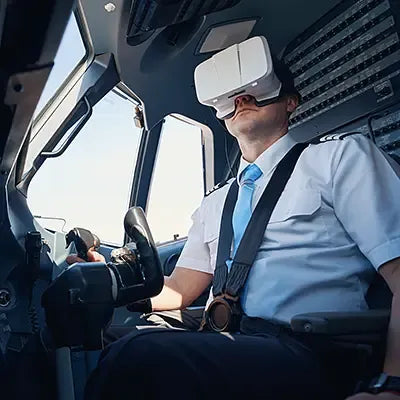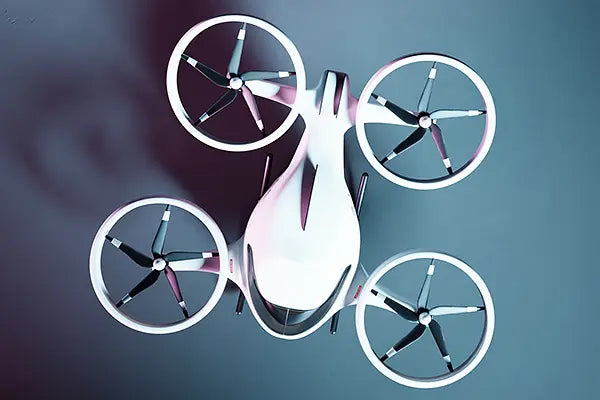Pilot requirements for a new landscape
We all know it isn’t as simple as more flight hours equals more competence. We strive to understand what is expected of a pilot whether that is working for a commercial airline, in a business jet operating environment, flying for emergency services, or as part of a charity organisation operating in the most remote locations. Each role has its own unique requirements and each organisation its own culture and operational demands.
With an expanding and developing Advanced Air Mobility sector, the ability to attract and retain relevant expertise will be vital. As eVTOL operations commence, it is important to ensure sufficient consideration is being given to not only the pilot but all human elements within the process.
As the automation level increases from Human Within the Loop (HWTL), through Human On the Loop (HOTL), to eventually Human Over the Loop (HOVTL), it is notable that there will always be a human in the flight process – although the role can be expected to evolve along with the title, be it pilot, operator or supervisor.
Contact us today to find out more about how we could help with your pilot and operator selection requirements in Advanced Air Mobility using our ADAPT assessments.
Advanced Air Mobility: Pre-Selection Assessments eBook
Here at Symbiotics, we've also created an eBook discussing AAM:
Pre-Selection Assessments. Download it today to find out more about:

Are you thinking about your people selection ahead of eVTOL operations? We are.
At Symbiotics, we are working to understand these future requirements to ensure that the AAM landscape has suitable and effective aptitude assessments in place to support safety and compliance requirements along with effective training and retaining talent. With the diversity in the design of eVTOL aircraft and the different approaches to operating models, it is likely we can expect a more diverse and varied role of pilots.
"Predictions for the number of eVTOL pilots required suggest as many as 60,000 more by 2028."
Predictions for the number of eVTOL pilots required suggest as many as 60,000 more by 2028. This is expected to drive a need to widen the pool for talent. For example, currently under 5% of commercial pilots are women*. This new subsector of aviation holds potentially a greater appeal to females offering a more balanced approach within the ability to fly closer to home with more regular shift patterns that fit into family life.
From a regulatory perspective, EASA and the FAA are both looking at how these new aircraft can operate within the existing regulations, aircraft infrastructure, compliance, safety, and logistical ecosystems. Currently there is a somewhat different approach between the two regulators as to how the pilot requirements can be met. EASA are working on an additional qualification for flying air taxis with passengers that can be added to both CPL(H) and CPL(A) holder licences, whilst the FAA are proposing a type-like rating for each type of vehicle, with different powered-lift aircraft having different configuration and flight controls amongst other things.
With AAM, we will see an operating environment not yet seen before in terms of the aircraft variety, the need for additional airspace infrastructure, and the demands on the pilot. Just as with current Pilot Aptitude Testing, the selection of eVTOL pilots needs to be effective and consistent when focussing on the necessary aptitude and personality traits required to ensure competency standards are met. Our ADAPT assessments cover the 9 pilot competencies and we are working to ensure that they are relevant and effective for AAM operations. Find out more about how ADAPT meets the ICAO competencies.
Contact us today to find out more about how we could help you with your specific requirements.
*Source: https://www.cae.com/media/documents/Civil_Aviation/women_in_flight/CAE_FlightGlobal_ContentPartnership_Digital.pdf
The evolving role of the pilot in the AAM landscape
The regulators are agreed that the level of safety for eVTOL capable aircraft requires at least as high as that applicable to operations with conventional aircraft or helicopters. So what additional considerations are there for the eVTOL pilot, operator, or supervisor within the AAM environment?
Whilst the initial requirements for pilots will be filled by qualified and experienced pilots, as the industry advances with eVTOL pilot qualifications, power-lifted aircraft type ratings, and new training pathways developed, understanding the competencies required and existing capabilities across expected applicant pools along with personality differences will be vital. Candidates may be entering AAM operations from very different backgrounds, and therefore how they map over to the requirements of the role needs to be considered, allowing for consistency and effective selection whether candidates are a newly qualified CPL Pilot, Business Jet Pilot, Airline Pilot, Rotary Pilot, Ex-military Pilot or possibly in the future - a drone pilot.

Find out more by downloading our eBook.
As the pace of progress continues within AAM, moving towards future autonomous flight, the pilot role is expected to evolve into ground supervisor roles with the aircraft controlled by an operator using a keyboard and mouse, instead of a joystick. OEMs are envisaging a 1:3 ratio of operator to aircraft. The supervisor is not expected to be a critical safety element at all during the flight, as the system is designed to get back to ground safely and can do so without a pilot. It is expected that there will be no requirement for input from a human supervisor so ground based supervisors will not have pilot requirements but will have specific qualifications to perform those tasks.
What will be the impact on the psychological requirements for pilots?
To ensure a robust selection process is in place for the complex AAM operating environment of the future, pre-screening and pilot aptitude assessments will remain a key tool to support selection, helping to ensure high levels of safety and predictability in performance with this new environment.

At Symbiotics, our testing allows our clients to identify the psychological attributes of a pilot to ensure their suitability in respect of their role, work environment and organisational culture, to not only help ensure the safe operation of an aircraft, but also that they are a good fit for operations and the organisation to ensure retention. Find out more about our cultural profiling services.
As always, training needs and selection processes should be considered, with any training course focused on a comprehensive job analysis that covers not only technical knowledge and skills required for the role, but also the personality traits, preferences, and aptitudes required for the job holder to operate safely and effectively.
How can Symbiotics support eVTOL operators?
Symbiotics are working to support the assessment needs for the emerging AAM market with our industry partners. We want to support those who are looking at the pilot/operator training requirements with AAM, who we can work with to develop the assessment requirements and appropriate test batteries.

We're reviewing our current test devices for suitability within single pilot operations and autonomous operations. We are looking at new test device developments and what additional testing requirements may be required. In addition, we are working to see how Virtual Reality (VR) and eye-tracking can play a part in assessments – partnering with Cineon, a VR and eye-tracking specialist, to see how we can incorporate additional measurements of cognitive and behavioural proficiencies within the assessment process to enrich data for selection that underpins candidate performance.
If you are interested in journeying with us to support best in class assessment for your eVTOL operations, please get in touch.

